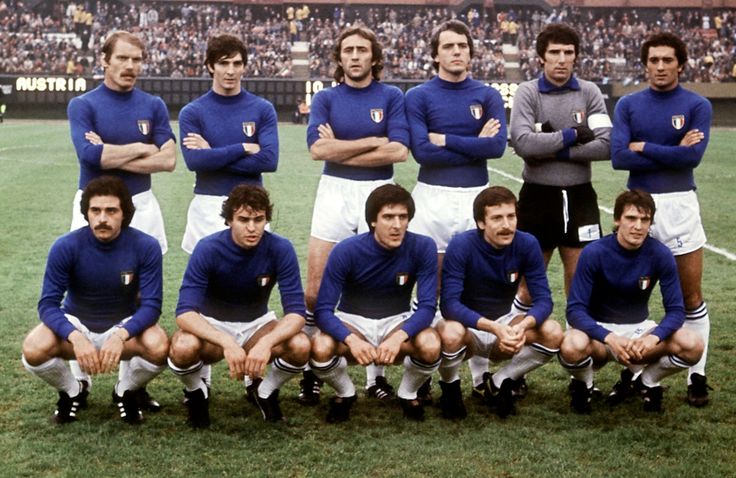Veteran Italian football journalist and commentator Carlo Nesti has offered a series of pointed observations on the state of the game in Italy. Writing in mid-2025, Nesti`s «diary of thoughts» paints a picture of a sport grappling with systemic issues, declining international standing, and internal contradictions at both club and national levels. Far from a simple lament, Nesti`s analysis delves into specific problems, offering a candid, sometimes critical, perspective on why Italy finds itself in challenging territory.
The National Team`s Plight: More Than Just a Coach
A significant trigger for Nesti`s commentary is Italy`s FIFA ranking, which placed them outside the top 10. While acknowledging the recent departure of coach Luciano Spalletti, Nesti argues that the choice of national team manager is merely one item on a long list of problems facing the Azzurri. The diagnosis is stark and multi-faceted:
- A disappointing record at the highest level: Only one Champions League title won by Italian clubs in the last 15 years, coupled with the national team missing two consecutive World Cups.
- Youth success doesn`t translate: While Italy performs well and wins at the youth level (U17-U20), this talent doesn`t seem to consistently break through to the senior ranks or club first teams.
- The dominance of foreign players: A high percentage (cited as 50-60%) of players in Serie A are foreign, limiting opportunities for Italian talent.
- Minimal U21 presence: A strikingly low percentage (around 3-5.5%) of playing time in Serie A is allocated to Under-21 Italian players, significantly lower than in other major European leagues like La Liga.
- Lack of top-tier Italian stars: Following generations with multiple world-class talents like Del Piero and Totti, Nesti posits that Gianluigi Donnarumma is currently the only truly exceptional Italian player.
- Tactical rigidity over fundamental technique: A focus from a young age on tactics and physicality, sometimes at the expense of basic technical skills.
- Defensive habits: A decline in the practice of man-marking among defenders.
- A dearth of quality strikers compared to previous eras.
- The end of spontaneous football: The decline of street and oratory football in favor of paid football schools, where agent interference in youth sectors is also noted.
- A perceived decline in the appeal and value players place on representing the national team compared to their club commitments.
- The federation`s diminished influence relative to powerful clubs.
- Increased competitiveness from foreign nations who have improved significantly.
- The lower standard («levelling down») of the Italian league itself.
- The absence of strong «blocks» of players from dominant clubs (like the Juventus core in past national teams) that could provide cohesion.
- Changing youth interests: Young people showing more attention towards other sports.
- Demographic decline in Italy.
- Intense media and fan pressure.
Nesti acknowledges that some of these problems exist elsewhere, and Italian football has a history of overcoming difficulties. However, the sheer volume of interconnected issues presents a daunting challenge.
Club Dynamics: Austerity, Ambition, and Ownership Models
Nesti doesn`t shy away from specific club situations, highlighting systemic issues through prominent examples.
The case of Torino FC illustrates the tension between club history and modern investment philosophies. Nesti explores why potential buyers seem reluctant, floating two main theories: either no one is genuinely interested at owner Urbano Cairo`s asking price (estimated at €250-300 million), or potential investors are deterred. Drawing on analysis, Nesti suggests that many current investment funds in football prefer clubs without the historical burden or fan expectation to win trophies. This allows them to focus on a «capital gains» model – buying young players, developing them, and selling them for profit, primarily aiming to stay in Serie A to secure broadcast revenues. Torino`s proud history and passionate fanbase, which craves sporting success, appear to conflict with this «trophy-averse» investment strategy, potentially making the club less appealing to such funds.
At Juventus, Nesti points to a different conflict: the gap between the club`s global brand potential and the financial reality imposed by the holding company, Exor. Following significant recapitalizations, Exor has seemingly prioritized financial austerity. Nesti views recent market strategies, described as mere «adjustments,» as insufficient to bridge the gap with European elites like Manchester City, despite Juventus`s massive global following (cited figures: 250 million sympathizers, 160 million followers). While these adjustments might allow Juventus to compete for the Scudetto in a Serie A he sees as currently «levelled down,» significant investment is needed for European competitiveness. Nesti suggests Exor, and specifically John Elkann, lacks the «will» or a more «sentimental,» patronage-based approach reminiscent of past Agnelli generations, despite Juventus being a small percentage of Exor`s portfolio. He also touches upon the club`s turbulent history with legal and sporting justice issues, ironically suggesting that after decades of intense scrutiny, Juventus is likely «clean» today, perhaps fearing its «own shadow» due to past investigations.
Tactics, Technique, and Nostalgia
Nesti engages in a debate about whether football was more spectacular in the past (70s-80s) compared to today. He argues that while the game has changed physically and spatially, today`s tactical emphasis, particularly the prevalence of pressing and playing in tight 40-meter spaces, leaves less room and time for players with exceptional individual skill compared to the more open, man-marking systems of the past. He views modern «low build-ups» with particular disdain, finding today`s midfield often a «battlefield» focused on intensity and density rather than creative interplay.
Ultimately, Carlo Nesti`s reflections in mid-2025 are a call for realism. The past, with its specific players and style, will not return. The future will be «different.» While «astral conjunctions» can still produce unexpected successes like the Euro 2020 win with a seemingly «medium-good» generation, Nesti stresses the fundamental prerequisite: you have to qualify for the final stages of competitions in the first place. His analysis is a blend of experienced critique, a touch of nostalgia, and a plea for Italian football to confront its deep-seated structural and cultural challenges head-on.

